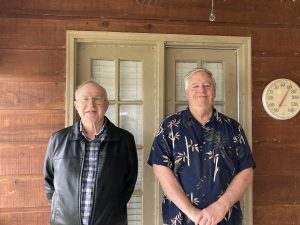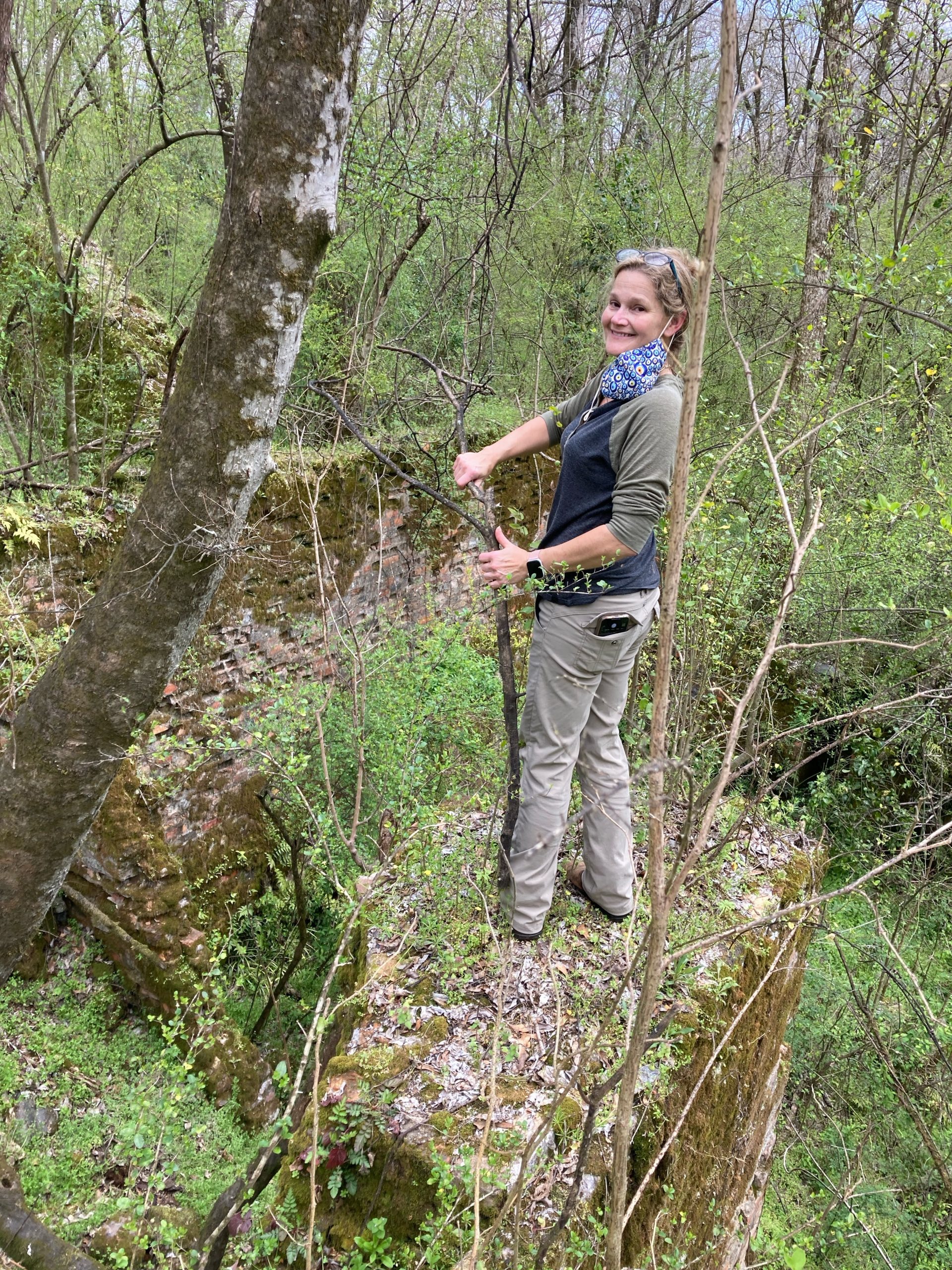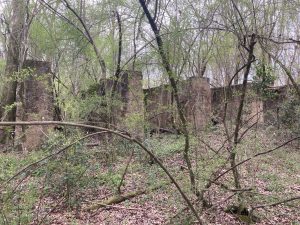The Conservancy has acquired a 13-acre tract of land in north-central Alabama which contains a portion of historic Fort Leslie, a Creek War fort, and Talladega Blast Furnace, which was built on the site in the late 1800s. The Creek territory, originally known as Nahce (Natchez) Town, became known as the Creek village of Talladega after European contact. It was home to Alexander Leslie, a man of French and Creek descent, who owned and operated a trading post at the site. During the Creek War in 1813, a stockade was built around the trading post to protect American sympathizers and it became known as Fort Leslie (or “Lashley” by some accounts). In 1889, the Talladega Blast Furnace (also known as Nina Furnace) was established at the fort. Today, the ruins of the blast furnace are all that remain visible of this site and its history.
Fort Leslie, built as a place of protection for Creeks and settlers who had allied themselves with the United States of America, played a pivotal role in the Battle of Talladega. On Nov. 9, 1813, Fort Leslie was surrounded by a group known as the Red Sticks, a portion of the Muscogee Creek people who resisted assimilation and fought back. At the time, Andrew Jackson and the Tennessee Militia were camped about 30 miles away at Fort Strother along the Coosa River. Legend has it that someone, possibly Nache man James Fife or the son of Chief Chinnaby the Great Warrior of the Natchez, Selocta (Eselocta) Chinnaby, slipped out of the fort dressed in a hog skin passing through hundreds of Red Sticks unnoticed and made his way to inform Jackson and his troops of the situation at Fort Leslie. The militia arrived later that evening to defend the fort. At the end of the battle, an estimated 300 Red Stick Creeks and 18 U.S. soldiers had perished.
After the Treaty of Cusseta on March 24, 1832, in which the Creeks ceded the remainder of their land east of the Mississippi River to the U.S. government, the former territory was advertised for sale. The treaty granted a half-section of land (320 acres) to Joseph Bruner, the first African American to own land in Alabama, for his services as an interpreter during the Creek War. This land grant included most of the area of the former Fort Leslie, and the tract was later sold and eventually donated for a town site in 1834. The town of Talladega, Alabama was incorporated on Jan. 9, 1835.
The Talladega Furnace was built on the site of Fort Leslie after the organization of the Talladega Iron & Steel Co., Ltd. in 1888. The 72-by-18-foot furnace went into blast on Oct. 5, 1889, using coke, a coal-based fuel, shipped in from Virginia. After 1889, coal was obtained from company-owned lands in a nearby county and coked at the furnace, which helped smelt about 750 tons of pig iron a week. Under new ownership, the furnace was rebuilt in 1899, increasing its height to 75 feet and adding 122 beehive coke ovens at the site. Despite all of this, the plant was never an efficient economical unit. Following a series of financial setbacks and changes in ownership, the stack and all accessories were dismantled for scrap in 1930. The first Bessemer (low phosphorus) pig iron produced in Alabama is claimed to have been made at the Talladega Furnace in 1890.
Archaeological excavation of the site was conducted in 1986 by anthropologist and professor Vernon James Knight, Jr. to locate and access the historic fort site. The findings provided important insight into life at the fort during the Creek War era. Although this was a Native fort raised in a Native town, the artifacts suggest that the occupants of the fort lived a more Euro-American lifestyle.

Former property owners John Garrett, left, and George Sims. Garrett will continue to serve as a site steward.
Photo Credit: Nikki Mattson / TAC
Former owner John Garrett worked tirelessly to see the Fort Leslie/Talladega Blast Furnace Site preserved, eventually selling the land with most of the site to the Conservancy. He also encouraged a neighboring landowner, George Sims, to sell his portion of the site to the Conservancy, thus creating the new preserve.
—Nikki Mattson, Southeast Field Representative





